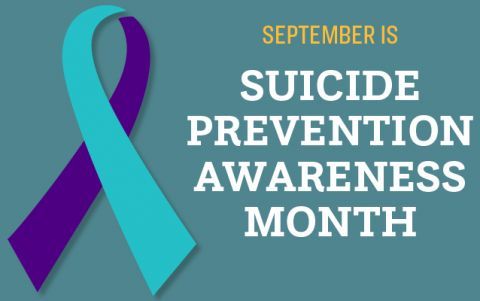Suicide is the leading cause of death among school aged youth, and as of 2018 in North Carolina in particular the rate of youth (ages 10-17) suicide in the state has nearly doubled over the previous decade. Risk factors of youth suicidal thoughts and/or behaviors include a history of trauma or abuse, mental health disorders (depression, anxiety, etc.), family history of suicide, and alcohol and substance. Gender and sexual orientation are also relevant risk factors among this age group due to the increased likelihood for social discrimination against LGBTQ+ youth. In North Carolina, 16% of high school students in 2017 reported seriously considering suicide, 43% of which were gay, lesbian, or bisexual students.
Warning signs includes physical changes in appearance or hygiene, significant mood swings (can often be interpreted as an "attitude problem"), experiences with bullying, increase in alcohol or drug use, sudden drop in grades, social withdrawal, risky or reckless behaviors, self-harm behaviors such as cutting, and talking about feeling hopeless or having nothing to live for.
Here are a few ways you can support pediatric patients and their families around suicide prevention:
- Check out this Suicide Prevention Toolkit created by the American Academy of Pediatrics, specifically created for pediatricians and pediatric healthcare providers. Their 1-page fact sheet for “Addressing Youth Suicide Prevention” is a quick and easy way to start.
- Screening: According to the American Academy of Pediatrics Guidelines for Adolescent Depression in Primary Care (GLAD-PC), adolescent patients ages 12 years and older should be screened annually for depression. The REACH Institute curated a toolkit to help primary care providers to put the GLAD-PC guidelines into effect.
- Examples of useful screening tools includes the ASQ (Ask Suicide Screening Questions, validated for youth 8 years and older), the PHQ-9 Modified for Adolescents (Patient Health Questionnaire, validated for youth 11-17), or the Columbia Depression Scale (validated for youth 11 years and older).
If the patient is identified as at risk:
- Develop a safety plan with the patient and family (Safety Plan Template). Talk to family members about reducing the patient’s access to lethal means (firearms, prescription drugs, etc.).
- Determine disposition (emergency psychiatric evaluation/refer to mental health specialist/schedule for a non-emergent mental health follow-up).
- Call NC-PAL with any questions around pediatric suicide prevention or appropriate next steps for at-risk patients.
